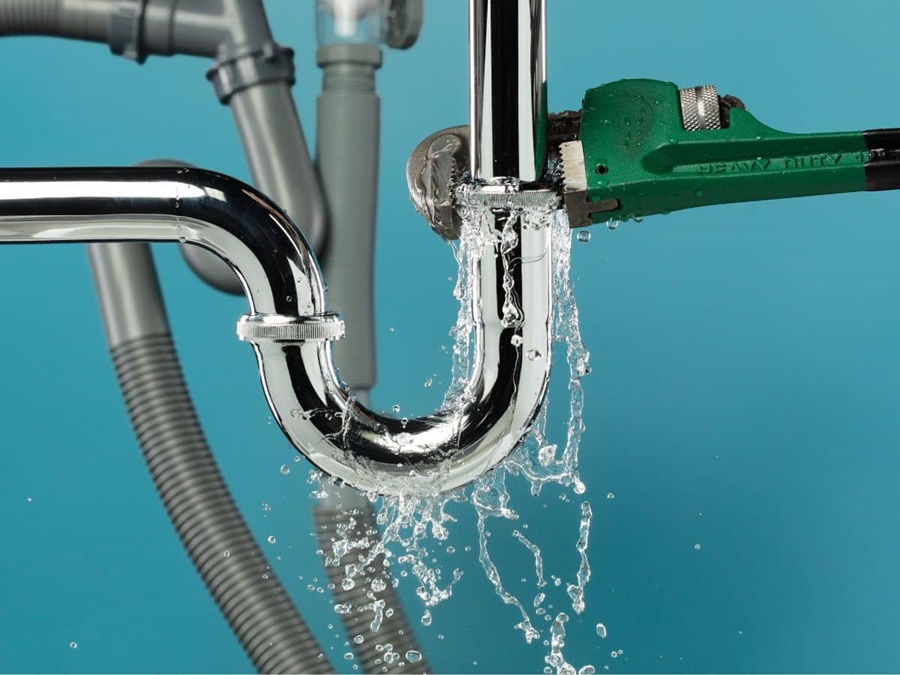A leaking bathroom sink can be frustrating and lead to water damage, mold, and higher utility bills. If you're noticing water pooling under your sink or dripping down the pipes, it's important to identify the source of the leak quickly. This article explores the most common reasons your bathroom sink may be leaking underneath, how to inspect each part, and what to do about it.
1. Loose or Damaged P-Trap
What Is the P-Trap?
The P-trap is the curved pipe under your sink that holds a small amount of water to prevent sewer gases from entering your home. It’s usually made of plastic or metal and connects to both the sink drain and the wall pipe.
Signs of a P-Trap Leak:
Dripping water when the sink is in use
Water collecting in the cabinet beneath the sink
Visible rust or cracks (in metal or plastic P-traps)
Causes:
Loose slip nuts or worn-out washers
Cracked or corroded pipes
Improper installation
Fix:
Tighten the slip nuts by hand or with pliers
Replace washers or the entire P-trap if it's damaged
2. Worn-Out Sink Drain Assembly
What Is the Drain Assembly?
This is the piece connected to the drain hole of the sink bowl that carries water to the P-trap. It includes a rubber or plumber’s putty seal between the sink and the flange.
Signs of a Drain Leak:
Water leaks only from around the drain hole
You see moisture or stains around the drain assembly under the sink
Causes:
A failed seal due to dried-out plumber’s putty or degraded rubber gaskets
Loose drain flange
Fix:
Remove the drain flange
Replace the plumber’s putty or gaskets
Reinstall and tighten the flange
3. Leaking Water Supply Connections
What Are Water Supply Lines?
These are flexible tubes or rigid pipes that deliver hot and cold water from the shut-off valves to your faucet.
Signs of Supply Line Leaks:
Constant dripping, even when the faucet isn’t in use
Water puddles directly below the valves or connections
Corrosion or mineral buildup on the connectors
Causes:
Loose fittings or compression nuts
Cracked or kinked supply lines
Worn-out rubber washers inside the fittings
Fix:
Tighten the connectors using a wrench
Replace faulty supply lines with new braided hoses
Check shut-off valves for leakage and replace if necessary
4. Faucet Leaks from Beneath
How Faucets Can Leak Below the Sink
Sometimes, the faucet itself leaks where it connects to the countertop or under the sink. These leaks can trickle down and mimic a pipe issue.
Signs:
Water dripping from the base of the faucet
Water stains or wet spots behind the sink
Dampness around mounting nuts under the countertop
Causes:
Loose mounting nuts
Cracked faucet body or cartridge leaks
Worn O-rings or seals
Fix:
Tighten mounting hardware
Replace O-rings or the entire faucet if needed
5. Cracks in the Sink or Countertop
When the Sink Itself Is the Problem
Ceramic, porcelain, or composite sinks can develop cracks that allow water to leak through to the cabinet below.
Signs:
Leaks not connected to visible plumbing
Slow but persistent moisture buildup
Fine cracks around the drain area or basin
Causes:
Impact damage (dropped objects)
Age-related wear
Manufacturing defects
Fix:
For hairline cracks, use a waterproof epoxy repair kit
For major cracks, replace the sink entirely
6. Condensation (Not a Leak!)
The Hidden Cause: Moisture from Air
Sometimes, what seems like a leak is actually condensation forming on cold water pipes.
Signs:
Dampness only during hot weather or humid days
No visible dripping, just moisture buildup
Pipes are cold to the touch
Fix:
Insulate the cold water pipes to prevent condensation
Improve bathroom ventilation (install or upgrade exhaust fan)
What to Do Next: Inspection and Repair
1. Clear out the cabinet under the sink to inspect all plumbing parts.
2. Dry everything off with a towel and run the water to see where it leaks.
3. Use a flashlight to check hidden connections.
4. If unsure, consider calling a licensed plumber—especially if leaks are persistent or near electrical outlets.
Preventative Tips
Check connections periodically for signs of wear or moisture.
Avoid harsh chemicals that can damage seals and pipes.
Don't overtighten fittings this can cause cracks or strip threads.
Use plumber’s tape or pipe joint compound on threaded connections for a better seal.
Conclusion
A leaking bathroom sink can stem from several issues ranging from loose fittings to worn-out seals or cracked components. The key to solving the problem is identifying the exact source of the leak. With a careful inspection and basic tools, many of these problems can be fixed by a confident DIYer. However, if you're unsure or uncomfortable handling plumbing repairs, it's best to consult a professional to avoid worsening the issue.

